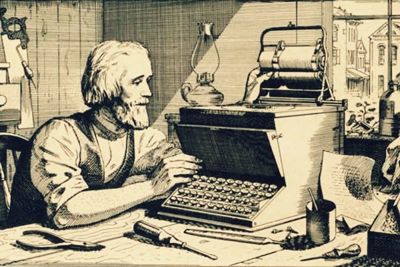On January 7th, 1714, a patent was filed by Henry Mill, an English inventor who worked as a waterworks engineer for a device “for impressing or transcribing of letters singly or progressively one after another, so neat and exact as not to be distinguished from print, very useful in settlements and public records.”
Although accepted by the patent office at the time, this proposal contained no drawings, no description of the apparatus, and no details on how to construct it. Still, it is commonly assumed to be the first description of an invention that we now know as the typewriter. However, it is not known if Mill ever had a detailed design in mind or whether he was simply filing a patent in the hope of being able to work the details out later.
Whatever the details, this device was never actually built. It was not until late in the following century that something recognizable as a typewriter was constructed. The Sholes & Glidden Type Writer was initially designed in 1866 and finally manufactured and introduced in 1874. Therefore, you could say that the American inventor Christopher Latham Sholes and amateur mechanic Carlos S. Glidden are the fathers of the typewriter.
Several machines preceded the Sholes & Glidden. However, none of them produced letters progressively and singly, as in writing, which most typewriter history buffs take as the full definition of the machine.
But perhaps they do all owe something to that patent, filed on January 7th, 1714, by the English inventor Henry Mill.

